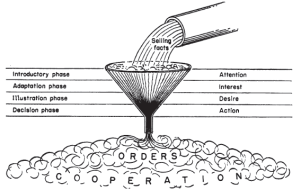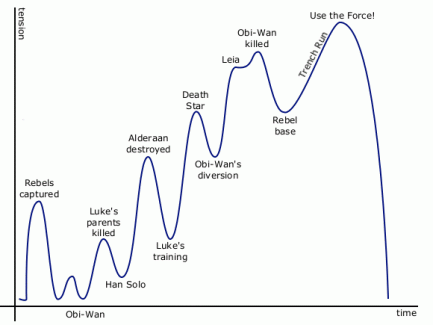Tim Matthews's Blog, page 2
December 10, 2019
My YouTube Awakening – Five Things I’ve Learned So Far
Estimated Reading Time: 3 minutes
 Every few years I have a head-smacking moment where I realize I’ve been missing a trick. A while back I admitted I was wrong to be a content marketing naysayer. Just this year I realized how I’d been missing the boat on YouTube.
Every few years I have a head-smacking moment where I realize I’ve been missing a trick. A while back I admitted I was wrong to be a content marketing naysayer. Just this year I realized how I’d been missing the boat on YouTube.
I’ve known about YouTube, of course. It saved my life teaching me how to fix my Samsung freezer’s ice maker (154,289 views!). My kids don’t really watch television anymore. Just about everything they view is on YouTube. But I never took it seriously as a tool for B2B marketing.
Why the bias? My feeling was that in B2B marketingYouTube, much like Facebook, didn’t have a place in the buying process my customers go through. Here’s why I was wrong: YouTube is where people go to learn. And learning is a key part of the buying process.
What I came to understand was how many of my buyers and users were turning to YouTube videos to educate themselves. My previous content marketing awakening came when I realized marketers today need to create content related to problems their customers are trying to solve, and not just their products. I bought in when it came to blogs and SEO. My personal bias led me to overlook the fact that YouTube can serve the same purpose.
I have two of our sales engineers to thank for setting me straight. Both of them had been a security analyst – our target user – before joining Exabeam, and they both told me how little time they had for training. Many analysts, I learned, are self-taught, and YouTube is their first port of call.
We had a YouTube page, but it was a pretty lonely place. We’d double-post our customer videos there, as well as some of our old webinar recordings. But that was it. Like our Facebook page, really just a box to check rather than a concerted marketing effort.
Once I’d been clued-in to the power of video, though, I went down the YouTube rabbit hole. I drove my wife crazy with my nightly ‘Did you know?’ learnings. Conversations with my team were like that ‘What Dogs Hear’ Far Side comic: “Blah, blah, blah YouTube. Blah, blah, blah YouTube.” It began to seem that YouTube was the answer to everything. Some of my staff started thinking I had gone off the deep end.
Though we are just at the beginning of our journey, we’re already making progress. Our goal is to create content to answer questions and teach skills related to cybersecurity. Eventually, we’ll introduce offers into our videos that move people into the top of the sales funnel. Here are five things I’ve learned so far:
Keep an Open Mind – while I was down the rabbit hole, I was often agog at the volume of views and high subscriber counts that belonged to people and companies I’ve never heard of before. YouTube is a whole different world. Just because you are not a big public company, a famous blogger or pundit, or huge on Twitter, doesn’t mean you can’t be big on YouTube. The flip side is also true – your reputation in other media won’t automatically make you big on YouTube. You have to put in the work.
Let Your Hair Down – the vibe is very different on YouTube. It’s more personal. Slick corporate videos may actually turn people off. B2B marketers may need to go from chic to shabby chic to fit in.
Optimize, Optimize, Optimize – boy, there’s a lot to optimize on YouTube. Descriptions. Meta tags. Thumbnails. Also, SEO is totally different than on Google. Conceptually, it’s the same, but the algorithm is different. You need to do SEO optimization for YouTube specifically. And, just to keep things interesting, Google search now includes what’s called the Google video carousel. YouTube videos often appear on Google search engine results pages. Which means you need to optimize for both YouTube search and Google search.
Minutes and Hours – in all my years of marketing, I’ve never used minutes or hours as a metric. But ‘watch time’ is the name of the game on YouTube. You want people to watch your content, and YouTube does, too. Details of the YouTube algorithm are secret, but it is well known that watch time is an important factor in how your videos rank. As of the writing of this blog, our channel has 200 hours of watch time per month, which I find pretty astonishing.
Seek Expertise – Sure, anyone can start a channel. But only 40% of channels have more than 1000 subscribers. If you want to grow, I recommend seeking expertise. Use YouTube as your first step. There is a ton of fundamental information on channel optimization, video production, growth strategies, and more. We also hired an agency with specific YouTube expertise (funny enough, our SEO agency knows very little about YouTube search optimization). My hope is that, much like Google SEO and conversion rate optimization, we’ll build basic YouTube competency on my team and can use the agency for more advanced strategies.
How far will we go on YouTube? I’m not quite sure yet. But I’ll never dismiss its importance again, and I only hope I’m faster to recognize the next big thing, whatever that is.
The post My YouTube Awakening – Five Things I’ve Learned So Far appeared first on Matthews on Marketing.
September 23, 2019
Presenters – Please Tell Me a Story
Estimated Reading Time: 2 minutes
 Two young lovers kill themselves because love is forbidden by their families.
Two young lovers kill themselves because love is forbidden by their families.
A captain is so obsessed with the hunt that he puts the lives of himself and his crew on the line.
An orphan farm boy leaves home to fight an oppressive empire and discover who killed his family.
You, no doubt, recognized the plots of Romeo and Juliet, Moby Dick and the original Star Wars. These are classic stories that have withstood the test of time. We remember them because humans love stories. We love to hear them, and we love to share them.
Here is a plot summary that I think could apply to 90 percent of presentations I’ve seen: a man stands in a darkened room, reads off of projected slides and shares a number of facts with a quiet audience. Not really compelling.
So, why don’t we hear more stories in presentations? My take is that it’s just harder. Great novels, plays and movies are years in the making. Creativity, hard work and round after round of editing are required. But don’t you want your audience to love the experience of your presentation so much that they not only applaud at the end, but share what they heard with friends and colleagues? After all, the ultimate goal of any presentation is not just to educate, but to persuade.
Research published in Harvard Business Review by Paul Zak confirms that people respond to stories:
My experiments show that character-driven stories with emotional content result in a better understanding of the key points a speaker wishes to make and enable better recall of these points weeks later.
Now, I’m not asking you to create an epic. All I ask is that you create a story and include it into your presentation. In addition to working on your presentation skills, it’s the most important thing you can do to make your presentation memorable and compelling. Here are three storytelling techniques you can use.
Tell a short story up front – this is the most basic technique and a good way to initially engage the audience and, hopefully, impart a simple story they can retell. Start your presentation with a quick anecdote that illustrates the problem or issue you are discussing. The more personal the better. It’s okay to retell something you read in the paper, but it will not have the impact of something you experienced and can tell firsthand.
Structure your presentation as a story arc – there are a few classic story arcs. The simplest is beginning, middle, end. A more compelling format is crisis, climax, resolution. Star Wars: A New Hope actually uses a series of building crises to up the tension, as you can see in Figure 1 below. Could you tell how your customer was in a state of crisis, perhaps a shortage or delay? You rode in to save the day and all was well with the world again?
Figure 1: A series of building crises up the tension and set the stage for a powerful climax in Star Wars: A New Hope Source: https://atimeforgames.wordpress.com
Start with the ending – There are some great movies that start with the ending. Pulp Fiction. American Beauty. The Usual Suspects. They grab you right away and then take you back to the beginning, making you pay close attention as you wonder how the plot will ever get to what you just saw. If you want to hook and audience early and keep them in the palm of your hand, this is the technique to use. It takes a bit more work, but is powerful and will stand out. There we stood, on the two-yard line with 30 seconds to go, and our first chance to win the division championship. A great start for a pitch on a fitness program or coaching method that took a mediocre team to glory. Will they make it? Listen in to find out.
These are just a few examples. Your presentation can be as varied as the canon of film and literature. Start entertaining your audiences and your message will come through even stronger.
May the Force be with you.
The post Presenters – Please Tell Me a Story appeared first on Matthews on Marketing.
May 20, 2019
Marketingspeak: What is ‘Ducking’?
Estimated Reading Time: 1 minute
 With the rise of content marketing, more and more terms from broadcasting and publishing are finding their way into marketing conversations. We just launched a podcast at my current company, and during the production we found ourselves unequipped to give direction to our freelance audio engineer. Podcasts have a jargon all their own. Which is how we came to learn a new term, ducking.
With the rise of content marketing, more and more terms from broadcasting and publishing are finding their way into marketing conversations. We just launched a podcast at my current company, and during the production we found ourselves unequipped to give direction to our freelance audio engineer. Podcasts have a jargon all their own. Which is how we came to learn a new term, ducking.
Ducking, in audio recording, is a technique that assures that the host’s or guest’s voice can be heard clearly over other sounds. You want to background sounds to “duck” under the voice of the speaker. The engineer (or amateur producer) may also need to adjust the background track up to assure it’s not too faint when no one is speaking. Some applications have ducking built in so you can set a track to be ducked, and it will adjust automatically, reducing the level when it overlaps with another track.
The most common need for ducking is making sure background music does not overwhelm the speaker. Music is there to set the mood or underscore what’s being said, not take over. Similarly, some podcasts introduce ambient sounds, like the rush of a river in a travel story, to set the mood. These ambient sounds can be used to introduce a segment at a higher level, and then keep the listener in the setting at a lower level as the narrator speaks. If you are recording live in a cafe, you want to make sure the clinking of plates and steaming of milk is atmospheric, not distracting.
I’m sure this won’t be the last time I visit audio lingo here. Just last week I learned our podcast has bumpers, but no stinger.
, such as background music.
The post Marketingspeak: What is ‘Ducking’? appeared first on Matthews on Marketing.
February 19, 2019
How to Set the Pace for Your Marketing Team
Estimated Reading Time: 3 minutes
 Marketing. A never-ending river of tasks. How do you make sure you get enough done without drowning your team? Or, to mix metaphors, burning them out.
Marketing. A never-ending river of tasks. How do you make sure you get enough done without drowning your team? Or, to mix metaphors, burning them out.
I’d like to introduce you, as a marketing leader, to the idea of pace, or what some people call tempo. I often hear these two terms bandied about while I’m watching Premier League soccer early on weekend mornings in my office (my way of procrastinating before I get down to writing). The idea is that the dominant team sets the tempo and thereby controls the game. A useful concept for a marketing leader who wants to win in their market.
How can you dominate the competition by setting the right pace? One that’s not so fast that you burn out your team, but fast enough to make the competition have to chase you? Finding that balance and setting that pace is a crucial skill for any marketing leader. Here are a few techniques I recommend.
Know Your Competition
How fast is your competition moving? That’s crucial to know. How can you find out? Start by literally sizing them up. Go to LinkedIn and find out how many people are on their team and who they are. How good are they? You can usually get a sense from their backgrounds. Chances are you know someone who knows people on your competitions’ marketing teams.
Once you know each of your competitor’s team, find out the game they are playing. You do this by doing a competitive review of their go-to-market. Not their product or service, but how they are marketing and selling it. Assign your team leads to look into their channel, advertising, demand strategies, messaging – whatever you can.
If this sounds hard, it really isn’t. There are some great tools out there for spying on your competition. You can also run a fun exercise I’ve written about before called “Be the Buyer Day,” where you act like a customer and try and buy a product from you and your competition. It’s amazing what you will find out.
Implement Agile Marketing
First, a definition
At its core, Agile marketing is a tactical marketing approach in which teams identify and focus their collective efforts on high value projects, complete those projects cooperatively, measure their impact, and then continuously and incrementally improve the results over time. Source: Workfront
On my teams over the last few years, we have divided up our annual plan into twelve months. We then set monthly objectives – between three and five per person – and review them in our weekly meetings. Some weeks we will cover them in detail. Other weeks we will just review those that are not complete and if there are any “blockers” as they are called. Not only will you get the work done, but you will focus your team. Those who take on too much will stand out and can be managed, as will those who are falling behind. (If you want to know more about how to implement agile marketing, you can read my post of the topic here.)
Take a Breath and Talk to a Customer
Sometimes you just need to get off the treadmill and find out what’s really going on. You and your management team should spend time talking to customers. How you do that will depend on your industry, but you will find out a lot. Is what you are doing even working? Maybe there are programs you can cut out. How is the competition doing?
Get out of your building. Heed the adage that nothing important happens in the office. Your team may object at first. How, they will ask, can we attend all of our internal meetings and get our monthly objectives done and have to time talk to customers? That’s when you remind them that there are no buyers in the building. Marketing stems from the word market, and that’s where they need to spend some time. And as a leader, how will you have any idea if you are running your team at the right pace if you do not understand how your business actually happens?
One last thought on pace. You should explain to your team what you are up to. I’ve found most marketers respond well to the idea of outrunning the competition. If you don’t explain why the team is performing competitive analysis, keeping lists of objectives, and interrupting their work weeks with customer visits, you run the risk of being known as a taskmaster rather than a pacesetter. And you can’t run away from that.
The post How to Set the Pace for Your Marketing Team appeared first on Matthews on Marketing.
January 14, 2019
The Five Benefits of Curiosity in Marketing
Estimated Reading Time: 2 minutes
 If you are reading this post, my guess is that you are a curious person. The kind of person who is inquisitive by nature. A life learner.
If you are reading this post, my guess is that you are a curious person. The kind of person who is inquisitive by nature. A life learner.
I’ve written before about the traits that make up a good marketer. Curiosity was top of the list. And I’m not the only marketer who values the quality. Here’s what Seth Godin had to say:
“If you are not curious, you are not going to learn.”
I think learning is the point. It’s not just asking a lot of questions. That just makes you nosey. It’s seeking a deeper understanding that makes you a great marketer. Let’s double click into the ways I think a deeper understanding helps marketing:
Better writing – marketing is all about communicating, and writing is a key component (Even videos and podcasts need great scripts to keep your interest.). If you think about great non-fiction writers, like Michael Lewis, Mary Roach, or Malcolm Gladwell, they need to dig deeper to turn topics as mind-bending as derivatives, vast as space travel, or mundane as ketchup into page turners.
Customer understanding – the biggest mistake most marketers make – over and over again – is to forget to speak to actual customers and prospects. Sure, it’s fine to look at demographics and talk to salespeople, but there’s nothing like hearing from a customer – in their own words – what problems they face and how they view your brand. Curious marketers will dig down to find what we in the business-to-business segment call personal pain: what bad thing happens to you if this problem persists, and how can we solve that for you?
Discovery – most online marketers these days do at least some A/B testing. Curious marketers are really good at it because they can think of more hypotheses to test. What happens if we try this offer? What if we tried an entirely different signup flow? Should we try something different for mobile? The questions are endless, as are the possibilities.
Competitive advantage – the second-best thing to talking to customers is learning from the competition. Not to say you should copy everything they do – god knows some of my competitors over the years had horrendous ideas – but you will both know where you stand and perhaps pick up an idea or two. There are all kinds of ways you can spy on your competitors and their marketing approach to get an edge.
Simplification – if you want to be a mediocre marketer, then stick to the superficial. You can spot these types by their jargon-packed ad copy and websites. Top marketers, on the other hand, seek to understand products more deeply so they can more clearly explain them. The curious ones also look to use their understanding to differentiate their brands or products from the competition. You never know where that competitive advantage might be found. I’ve recently spent over ten hours asking developers and researchers at my current company to explain our core technology. I finally tapped into the vein of gold in a conversation between Christmas and New Year. “Why didn’t you tell me that three weeks ago?” I asked. “We were trying to put it into marketing terms,” was the reply. It’s key when you are talking to an expert to have them give it to you straight. You are the marketer, and you can write the copy.
So, resolve this year to become a more curious marketer. Like a lot of other resolutions, all you need to do is remind yourself to do it and stick with it. The results will be worth it.
The post The Five Benefits of Curiosity in Marketing appeared first on Matthews on Marketing.
September 25, 2018
Ten Marketing Terms You Need to Know
Estimated Reading Time: 10 minutes
Marketing lingo has broad and varied origins. The provenance of the terms on the list below spans astronomy, the Industrial Age, television and Yiddish. So, you’d be forgiven for not knowing them all.
Then there are newer terms that have been created to describe concepts that have only just been developed. The explosion of martech makes it hard to keep up.
Below are ten terms that I think are essential if you are a modern marketer: five old, and five new.
Old
Boilerplate
 A boilerplate is a description of your company or organization, designed to be used over and over without change. Anyone who has written a press release has added this short paragraph to the bottom of the page. But what do a boiler or a plate have to do with PR? ‘Boiler plate’ originally referred to the small metal plate that identified the builder of a steam boiler (shown at left).
A boilerplate is a description of your company or organization, designed to be used over and over without change. Anyone who has written a press release has added this short paragraph to the bottom of the page. But what do a boiler or a plate have to do with PR? ‘Boiler plate’ originally referred to the small metal plate that identified the builder of a steam boiler (shown at left).
The term was borrowed by the printing industry, where plates of text for widespread reproduction, such as advertisements or syndicated columns, were cast or stamped in steel (instead of the much softer and less durable lead alloys used otherwise) ready for the printing press and distributed to newspapers around the United States. They came to be known as ‘boilerplates.’
The only marketing term borrowed from heavy industry? I think so.
The Funnel
The funnel is a shorthand term for describing the route by which prospective customers, or prospects, become customers. The visualization of the process looks like a funnel. A larger number of prospects go in the top and are reduced to a smaller number of customers who come out the bottom. Marketers talk about the demand funnel. Sales managers track the sales funnel daily. So who came up with the funnel visualization in the first place?
 Arthur Peterson, a marketing and sales executive in the pharmaceutical industry, coined the term. In his book Pharmaceutical Selling, Detailing, and Sales Training, he wrote, “The progression through the four primary steps in a sale, i.e., attention, interest, desire and action, may be compared to that of a substance moving through a funnel.”
Arthur Peterson, a marketing and sales executive in the pharmaceutical industry, coined the term. In his book Pharmaceutical Selling, Detailing, and Sales Training, he wrote, “The progression through the four primary steps in a sale, i.e., attention, interest, desire and action, may be compared to that of a substance moving through a funnel.”
Peterson’s funnel was dissected horizontally into four steps: A-I-D-A (attention, interest, desire, action). The concept has stuck, and nearly every sales executive learns it early on in his or her career. You can see above how the sales funnel looked in 1959.
Greeking
Greeking is a typesetting technique where intentionally incomprehensible dummy text is used to test the layout of a document. Since the reader can’t understand the text, they focus on the layout, which is the point. Plus, the designer doesn’t have to wait for the content to be finished to start working. The term was derived from the common idiom “It’s Greek to me,” itself from Shakespeare’s Julius Caesar.
If you work in marketing, you have probably seen the words “Lorem ipsum dolor” when reviewing a new document or website designs. These words are the most commonly used for greeking, and are a scrambled version of the Roman philosopher Cicero’s “The Extremes of Good and Evil.” In case you’ve forgotten it from high school Latin class, here’s the text:
Lorem ipsum dolor sit amet, consectetur adipiscing elit, sed do eiusmod tempor incididunt ut labore et dolore magna aliqua. Ut enim ad minim veniam, quis nostrud exercitation ullamco laboris nisi ut aliquip ex ea commodo consequat. Duis aute irure dolor in reprehenderit in voluptate velit esse cillum dolore eu fugiat nulla pariatur. Excepteur sint occaecat cupidatat non proident, sunt in culpa qui officia deserunt mollit anim id est laborum.
So yes, the most common form of Greeking is in Latin. Got that? It does make some sense when you think about it. Using the Greek alphabet would likely be distracting to the document reviewer, which is what greeking sets out to avoid in the first place. Latin, on the other hand, uses the same Roman alphabet as English. Latin is probably used since the dead language is the least likely to be understood by the modern reader. (What’s used in Greece, Russia, Japan, China and other countries that don’t use the Roman alphabet I don’t know.)
Who invented the technique? No one knows the name of the printer himself, but the scrambled version of Cicero’s writing first appeared in a print specimen book in the 1500’s. It was popularized in the 1960’s by the British typeface company Letraset. Aldus, creators of PageMaker (now owned by Adobe), are credited with bringing the text online.
So, the technique came to us from an anonymous printer living during the Renaissance, using the writing of an ancient Roman philosopher, and termed in a nod to the most famous playwright of all time. Never has so much history been packed into a single paragraph we ultimately ignore.
Lower Third
 Originally from the television industry, but now applicable to all kinds of video, a “lower third” is the graphic overlay that is typically used to identify the speaker. It can be used to convey any kind of information to the viewer. A typical example is shown on the left.
Originally from the television industry, but now applicable to all kinds of video, a “lower third” is the graphic overlay that is typically used to identify the speaker. It can be used to convey any kind of information to the viewer. A typical example is shown on the left.
The graphic appears at the bottom, to be the least obtrusive, and in what is known as the safe area – an area viewable by all television screens. There is no hard and fast rule that it must be one third of the screen, and it can be either a horizontal bar with text and graphics on top, or simply white or black text with a drop shadow to enhance readability.
With the increased use of video in marketing today, television terminology is becoming better known by marketers. Other essential terms include its lower third neighbor the bug, b-roll, bumper and outro.
Tcotchke
Every event manager knows the term. If you have ever been to a trade show, you have probably collected tcotchke, more commonly known as giveaways. (Some people call them swag, which is sometimes written as schwag, though that spelling carries with it a druggie connotation, and should never be written in all caps, as that is the type of baseless guess that too many marketers are guilty of.)
The term is the Yiddish word for ‘toy’ or ‘trinket,’ and commonly pronounced ‘chach-ka’ or ‘chach-kee,’ but no one in marketing is ever really sure how to say this word. Or spell it. Here are just some of the accepted spellings: tshotshke, tshatshke, tchachke, tchotchka, tchatchka, tchachke, tsotchke, chotski, and chochke.
New
Agile Marketing
Are you interested in adopting agile marketing, but unsure if it will fit with your organization’s culture? Or, perhaps you started and it’s not working. As I’ve come to learn, doing agile marketing right means more than daily standups. You will need to learn a few things about how you manage your people to make it work.
For those still not familiar with the concept, which is borrowed from software development, the idea of agile marketing is to create time-bound sets of objectives, prioritize them critically, and measure achievement frequently. Here’s how Jim Ewel puts it in his Agile Marketing blog:
Agile marketers follow a process, a process designed to increase alignment with the business aims of the organization and the sales staff, to improve communication, both within and outside the marketing team, and to increase the speed and responsiveness of marketing. The process copies that of agile development, with some differences in the details. This process is iterative, allowing for short marketing experiments, frequent feedback, and the ability to react to changing market conditions.
The biggest differences from conventional marketing operations are a) you move from yearly or quarterly planning to monthly or weekly planning, b) you are much more ruthless in your prioritization, and c) marketing meetings become much more
Burn Pixel
I’d heard of pixels being fired, but never burned. The term burn pixel was a new one on me.
To understand burn pixels, you first need to know about tracking pixels, which are single, transparent pixels placed on web pages. We all encounter tracking pixels while browsing, we just don’t see them. When a web page is downloaded, so is the invisible tracking pixel. That allows the marketer to track how many people visited the page. In digital adman parlance, tracking pixels are “set” or “added” to pages, and “fired” when downloaded.
A burn pixel is a type of tracking pixel. It is used in retargeting (aka remarketing), which is a marketing technique where advertisers show display ads to people who visited and then left their website. When someone visits a site but does not convert, the ad network cookies the visitor, then displays ads on other sites served by the network. Retargeting keeps the company or product top of mind and works to compel the visitor to return. This is why you will see ads for products you searched for or browsed when on other sites later the same day.
Now let’s feel the burn. You don’t want to annoy users by showing them your remarketing ads forever and ever. Nor do you want to spend money retargeting visitors who already returned and converted. A burn pixel allows you to untag a visitor who has converted, or someone who seen your ads a set number of times as set by the frequency cap. Why it is called a burn pixel, and why “burning” equates to removing someone from a list, I have not been able to unearth, despite a few hours of Googling.
Where there’s fire, water is sure to follow, which leads us to the cookie pool. This is the group of cookies maintained by the ad network, representing all users who have visited your site and are targets for remarketing. The pool can be segmented in your retargeting efforts. You might segment them by the type of product, geography, device type, or other factors, and serve up different ads accordingly.
As those of you who read my blog know, I am fascinated by the evolution of the language we use in marketing. The fact that an ephemeral, invisible pixel can be discussed in such elemental terms as burned and fired is fascinating.
And speaking of evolution, I would be remiss if I didn’t mention the origin of the word pixel. Such a fundamental part of our digital lexicon, we forget that it is a portmanteau of the words picture and element. Coined by Silicon Valley engineers? Nope. NASA scientists in 1965, and based on a the German word Bildpunkt (picture element) – from 1888!
Parallax
You’ve probably seen a parallax website before. Especially common on long, single-page scrolling sites, images in the background seem to scroll at a different speed than the text or images in the foreground. That’s called parallax.
According to web design site Awwwards:
The parallax effect uses multiple backgrounds which seem to move at different speeds to create a sensation of depth (creating a faux-3D effect) and an interesting browsing experience.
They have some great examples.
Since, as you know, I like to dig into the history of marketing verbiage, parallax comes from the Greek parallaxis, meaning “alteration.” Parallax is a difference in the apparent position of an object viewed along two different lines of sight, and is used in various fields. Astronomers use it to measure distance between stars. Rifle scope need to account for parallax to overcome differences in how a shooter perceives the crosshairs (foreground) and target (background). Video game developers use it to create a sensation of depth in first person games. And more.
Pretargeting
It wasn’t too long ago that marketers were learning about retargeting. Now there’s a new sibling in the advertising family named ‘pretargeting’. So what’s the diff?
Pretargeting is an online advertising technique where marketers target individual buyers based on profile, past behavior or both. It’s pre- and not re- because your ads get shown before your targets have ever been to your website. To my mind, pretargeting is a refinement of the age old advertising demographic; it is much more personal, down to named individuals.
How might a marketer use pretargeting? You could place your ad in front of all people who have visited your competitor’s website. A ski manufacturer could place ads in front of those who have checked the ski report in the past month. Or you could display your ad to people with a specific title, or who work for a given company. The idea is to get in front of likely buyers even if they have never heard of you, which is of course the aim of most advertising, but this new technique is, uh, more targeted.
Pretargeting works using cookies. These cookies track all kinds of information about your online life, and combined with information about you and your profile from other sources, creates what is known as audience data. This data can then be used to create very specific audiences who can be shown ads on most major platforms – Google, Facebook, LinkedIn, Twitter and others. You can work with one of these vendors, create your own advertising data management platform, or work with a service like Terminus to target specific buyers. With so much data available, the possibilities for creating custom audiences are almost endless.
I personally am very excited about all the possible applications of pretargeting. I also love how the innovation in martech is changing the language we use – marketing neologisms spun up like never before. Seems like only yesterday I was learning what a retargeting burn pixel is. Now I find myself in strategy sessions deciding on my pretargeting vs. retargeting spend. What’s next?
Third Party Data
Marketers have more data about potential customers than ever before. Some is in their own database and some is in big advertising platforms like Google AdWords. Most marketers use a combination, and hence the need to distinguish the various sources.
First party data is the information collected by you about your prospects and customers. It is typically collected from your website or marketing automation system using cookies. It may also be supplemented by research done by your SDR team or via customer surveys.
Second party data is someone else’s first party data. When you gain access to a partner’s database to run a promotion, you are using second party data. A common example is sending invitations to a dinner you co-host with another company to their database of customers. Or maybe a vineyard wants to create a joint promotion with an artisan cheese company and advertise via retargeting from their online cheese shop. There are endless possibilities.
Third party data includes the proprietary data from Google or Bing (which you can leverage but not own), as well as data you can purchase from aggregators like eXelate, BlueKai (now Oracle) and others. If you choose to buy third party data you may also need to invest in a data management platform.
A final caution when using any kind of data. The privacy landscape is changing with regulations like CASL in Canada and GDPR for EU citizens. The ins and outs of data usage are too involved for this post, but make sure you understand how you are able to use your first, second and third party data.
The post Ten Marketing Terms You Need to Know appeared first on Matthews on Marketing.
August 6, 2018
The “Helper” Play: How to Take on a Large Incumbent in a Big Market
Estimated Reading Time: 4 minutes
I gave a talk a few months back at Products that Count, hosted at Airbnb in San Francisco. My talk was about adapting your marketing strategy based on the maturity of the market. The talk was well received, but it was my description of “the helper play” that drew the most attention.
I don’t know who initially conceived the helper play, but I came to know if from a successful company in the cybersecurity market, Palo Alto Networks. The startup wanted in on the large firewall market. But in 2004, when they were founded, the 800-pound gorilla in the space was Check Point Software Technologies, which at that point had been in business for over ten years and had revenues of $515 million.
How do you get into a large market without poking the bear, rousing the sleeping dragon, or whatever you would do to anger a very large gorilla? The answer is you don’t compete. You create a complementary technology or application that is helpful to their product – the “helper.”
How to Run the Helper Play
Here are the five steps to running the play:
Create a technology or application that is complementary to the market leader – the helper product
Target sales to customers of the market leader
Gain enough traction to get marketing support from the market leader
Use revenues from your helper product sales to develop your full product
When you are ready, launch your full, competitive product
Essentially, the helper play is a trojan horse strategy. Let me walk you through each of the steps.
Creating the Helper Solution
I can’t tell you what to build or how to build it, but I can give you a few principles. First, the helper app needs to be truly helpful. Ideally, it fills a gap in the leader’s portfolio. Second, it cannot be trivial, lest it be simple for the incumbent to build with just a few developers.
Last, and perhaps most important, it should be something that can be a secret ingredient or real advantage when you roll out the full product. As we’ll get to in a bit, when you move from friend to foe, the guns will be turned on you. You will still not be big enough to outspend the leader, so you need a technical advantage in your product. Design that from the start.
Target the Customer Base of the Incumbents
This is pretty straightforward and makes the jobs of your heads of sales and marketing easier. You have a discrete set of accounts to target. Finding reseller partners is easy – just look on the partner listing page on the websites of the incumbent. Your value proposition should be easy to understand for customers who own the incumbent’s product. After all, who knows better than the customers where the gaps are?
In the case of Palo Alto, they created what they called a “firewall helper.” At that time, firewalls only understood networking protocols, and nothing about the application data in the packets carried over the network. Yet, there were significant security risks in those application data payloads. So, the Palo Alto Networks firewall helper, the PA-4000, filled that gap and didn’t threaten the core business of Check Point.
Importantly, your price point has to make sense. It should be a fraction of the cost of the incumbent’s product. Why? It’s easier for the customer to rationalize. Also, a high price won’t chew up so much of the budget that the customer won’t have adequate funds to renew or expand the deployment of the incumbent’s product. Messing with renewals or expansion is, er, not helpful, and would draw the ire of the incumbent’s sales rep and potentially put you on their CEO’s radar.
Gain Traction and Partner Up
Once you have enough traction to be taken seriously, then it’s time to partner. Join the technology alliance program of the incumbent and use that exposure to grow. Try to get a speaking slot at their user conference. Write blogs that illustrate how your tech is better together. Get customers who use both to spread the word.
Now, you might ask yourself why the incumbent would allow this. Why give exposure to a company doing something that the incumbent could arguably do themselves? There are two reasons. First, as mentioned above, your tech needs to be sophisticated enough that it would be non-trivial for the incumbent to do it themselves. They may want to, and think they have the talent, but when you get big, a lot of your engineering budget is spent on keeping your existing customers happy. So, no time for new projects. Maybe you have a patent or two that will make things even harder for them to copy what you have built.
The second reason you will be okay is that the corporate development team – the people who acquire companies – likely have their eye on you. They are waiting and watching to see how you do, and when they might pounce. Assuming you don’t want to be gobbled up by the incumbent – and maybe you do, but if you hold out, you will be worth more – you play the game.
Use Helper Sales to Fund Development of the Full Product
By now, your development team should be furiously building out the full product. Sales of the helper product should help you hire more coders. You will also now have insights into the tech of the incumbent, having deployed alongside them for several quarters or years. Also, importantly, you have access to potential customers for your full product. Consider forming a small group of design-partner customers to help you – in secret – design and work the kinks out.
D-Day: Launch Your Competitive Product
The moment of truth has arrived. Time to launch.
No real tricks here. It’s all up to your product and execution. You should have pre-sold your full product to a handful of design partner customers. You will need them as references to sell to more customers. Make sure not to surprise your partners. They will be caught in the middle and you want to know who is on your team.
Palo Alto Networks Today
How did it turn out? Palo Alto Networks – PANW (IPO in 2012) – is doing just fine. In 2017 revenue was $1.8 billion. They are now an 800-pounder themselves. Their full product was new kind of firewall that not only looked at application data, but subsumed the network firewall functionality, too. They called it the “next-gen firewall.” And Check Point? Still around, but at $1.8 billion in 2017, clearly they have lost that $500 million lead they had in 2004.
You can use the helper play to ease into a market and play alongside of the big boys. You may even become one yourself if you execute it properly. We’re running the play at my current company, Exabeam, to take on the big boys in the SIEM market. Will we become a billion-dollar player? Time will tell.
The post The “Helper” Play: How to Take on a Large Incumbent in a Big Market appeared first on Matthews on Marketing.
July 10, 2018
Marketingspeak: What is a ‘Tombstone’?
Estimated Reading Time: 1 minute
 We’ve all seen them, heeded them, and probably not given them much more thought. But these diminutive symbols are as crucial for periodical readers as compass index lines are for orienteers.
We’ve all seen them, heeded them, and probably not given them much more thought. But these diminutive symbols are as crucial for periodical readers as compass index lines are for orienteers.
A tombstone is a small icon that denotes the end of an article in a magazine or newspaper. Tombstones are typically small squares, circles or diamonds and follow the final sentence of the last paragraph. Some publications tie tombstones to their brand. Fortune, for example, uses the ‘F’ from its logo. Esquire used a miniature of its mascot Esky for many years.
What’s the tie in to marketing? Some brands – including mine – are starting to borrow tricks of the trade from magazine publishers in their content marketing efforts. We use the Exabeam logo bug as our tombstone. In my opinion, it makes our ebooks and white papers look more polished. Plus, of course, it’s another element that ties together your visual identity.
Figure 1: We use the bug from the Exabeam logo in our ebooks to make them look more polished.
Most marketers probably won’t know what you are talking about when you as for a tombstone to be added, though an engineer might, as the use of the term in publishing is said to have come from its use as a shorthand for Q.E.D at the end of math proofs. One thing I can’t explain is the propensity for three-letter terms related to other meanings of tombstone. In addition to Q.E.D. is a term commonly found on grave markers (R.I.P.) and the lucite tombstones investment bankers commission to commemorate public offerings (I.P.O.).
The post Marketingspeak: What is a ‘Tombstone’? appeared first on Matthews on Marketing.
June 12, 2018
CMO Tip: Use Magazines to Define and Maintain Your Style
Estimated Reading Time: 2 minutes
 Approachable. Friendly. Trustworthy. Fun without being snarky. Ever see direction like this in a style guide? I have. I’ve even written some of those words.
Approachable. Friendly. Trustworthy. Fun without being snarky. Ever see direction like this in a style guide? I have. I’ve even written some of those words.
Problem is, they are open to interpretation, and therefore not consistently effective. So, how can you communicate what you want to a wide and changing group of employees and vendors?
Here’s an idea. Use one or two magazines to help build your style guide. Magazines are widely available, and more importantly, they are tangible. You can reference a magazine for writing style, tone, typography, photography and overall visual design – all the things you would want in your own style guide.
Now, I’m sure there are doubters reading this who think there’s no way their brand – which is no doubt unique (and misunderstood) – could be represented by a magazine published by someone else. ‘What about Apple?’ I’m sure many will cry. Well, sure, Apple is Apple, and it’s been Garamonding and thinking different for over 20 years. But most brands are not Apple, so marketers should stop trying to be.
At my last company – which had been around for ten years and public for five – I was the third head of marketing and inherited a lineage that had seen three logos and two color palettes. And yet, we really didn’t have a style or a voice. Also, important details, like diagram style, had never been documented, so needless to say, we were all over the map.
I decided we were going to tackle a full style definition by looking around at various magazines. I consume a lot of them. My subscriptions include Fortune, Howler, Time, The New Yorker, and Sunset. When I’m on the road, I usually try to pick up one or two that I don’t subscribe to at the airport bookstore. Though I read the paper online, there’s nothing like the feel of a magazine, and the great layout, which was the genesis of my idea.
Starting the Exercise
To kick things off, I had my head of corporate marketing and my content marketing manager go to Barnes & Noble and pick up a bunch of magazines. I asked them to get a few business and technical magazines I thought might be good influences, but told them they could buy whatever else they wanted.
They then arrayed the mags on a long table in the marketing area, along with Post-it notes and pens. We asked the whole team to stop by, peruse the row of periodicals, and add a note to the pages they found interesting. Everything was fair game – writing style, type treatment, diagram style, whatever. A few folks got so into it they brought magazines from home that they felt had something to offer. Though we didn’t end up using anything from it, The Drake, a fly fishing quarterly, is really nicely designed.
Figure 1: A great example of how Popular Science creates diagrams that break down and explain complex things. Credit: Lucy Engleman
In the end, we took a lot from Fortune. These days, Fortune writes quite a bit about technology companies, so we thought it had the right business-tech tone for our buyers – neither too technical, but also not talking down to people who were tech savvy. Our fonts and type treatment, while not a rip off, were inspired by Fortune’s blend of serif and sans serif in articles. We selected Popular Science, which I had read as a kid, to help define our diagram and infographic style. What caught our eye was the way the editors break down very technical topics using graphics, usually labelled with numbers or steps, to aid in understanding. We felt it would really help our explainer blog posts and ebooks.
In addition to a fleshed out style guide, I think my content team also took a lot away from the exercise in terms of just great writing, design, and storytelling. They were inspired to try new approaches to getting our story across. We even started putting a tombstone at the end of our ebooks and white papers.
How is it going? Well, I just had a vendor tell me he went down to a book store in Canada to pick up Fortune and Popular Science for this team. We were designing a new microsite and he wanted to give his designers a little inspiration. Success!
The post CMO Tip: Use Magazines to Define and Maintain Your Style appeared first on Matthews on Marketing.
May 7, 2018
Marketingspeak: What is a ‘Lower Third’?
Estimated Reading Time: Less than a minute
Originally from the television industry, but now applicable to all kinds of video, a “lower third” is the graphic overlay that is typically used to identify the speaker. It can be used to convey any kind of information to the viewer.
The graphic appears at the bottom, to be the least obtrusive, and in what is known as the safe area – an area viewable by all television screens. There is no hard and fast rule that it must be one third of the screen, and it can be either a horizontal bar with text and graphics on top, or simply white or black text with a drop shadow to enhance readability.
With the increased use of video in marketing today, television terminology is becoming better known by marketers. Other essential terms include its lower third neighbor the bug, b-roll, bumper and outro.
Like marketing lingo. Check out other Marketingspeak posts here.
The post Marketingspeak: What is a ‘Lower Third’? appeared first on Matthews on Marketing.









